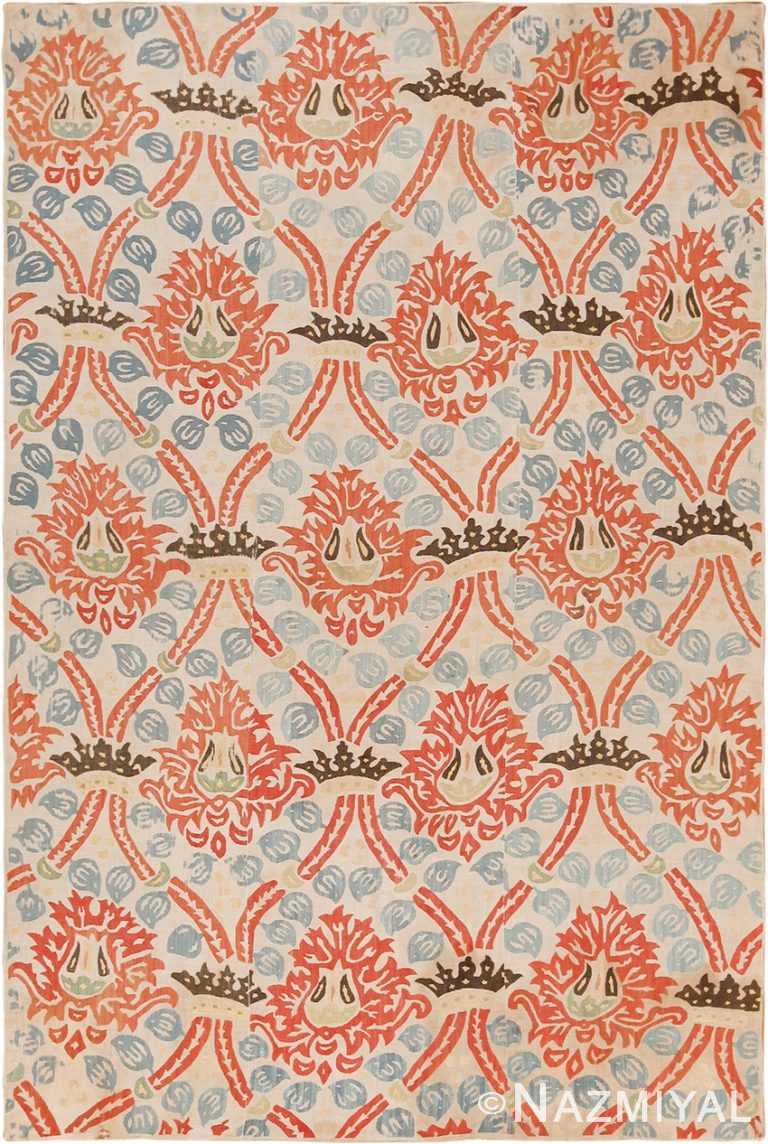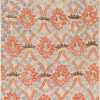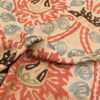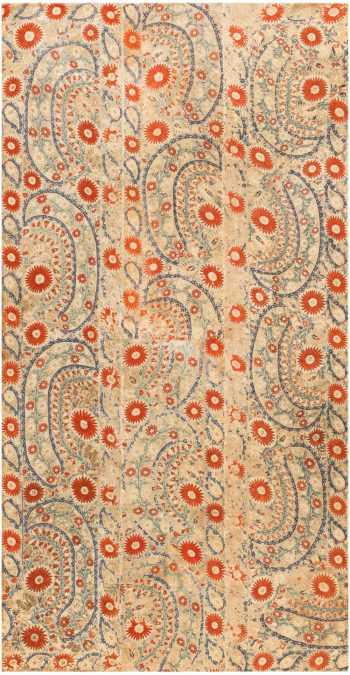17th Century Antique Ottoman Embroidered Textile 70332
Breathtaking Antique Ottoman Embroidered Textile, Country of Origin: Turkey, Circa Date: Late 16th Century / Early 17th Century – This rare and beautiful piece of Ottoman embroidery is from the late 16th or early 17th century. Few textiles from this period have survived the test of time, making this an exceptionally rare and significant piece. Pieces such as this were created for the aristocracy, and this piece gives us several clues about its origins.
First off, the colors of the piece are bright and bold. The piece has a simple color palette, using only five colors in bold contrast. The pattern is a larger-scale repeating pattern that is seen throughout Turkish miniature paintings of the time. The crown signifies that this piece was produced for the royal courts. The colors and patterns of this textile indicate that it was a commissioned piece for the Ottoman courts.
During this time, the Ottoman courts hired artists to produce pieces to show off the talent and skills of the Empire. They were often created to be used as diplomatic gifts or to be used to mark special occasions. Embroidered textiles were special and often used for home furnishings or clothing for dignitaries and special events. This piece shows the level of skill that these artists possessed in the pattern and level of detail of the piece.
This is a special antique rug with beautiful colors and patterns. It gives us a glimpse into the extravagance of the Ottoman court and the artisans that made its textile industry famous around the globe. This is a rare treasure because of its level of preservation and its iconic Turkish design. This is a piece for the serious collector and is a large piece. It could be used as a rug, table covering, or displayed on a wall. This cloth is a special piece and one of few remaining remnants from the height of the Ottoman Empire.
In Ottoman households, there were no rooms specified as “bedrooms”. As such, the bedding of these people would need to be easy to stored away in the cupboards during the daytime when they weren’t being used. This bedding was made up of many different layers including a mattress, sheets, and a top quilt which they decorated with embroidery. The embroidery was done professionally, and embroidered quilts were an expensive and prized object. Usually, the pieces had a cotton, silk or linen foundation and used a darning stitch. If they textile needed to be longer to cover the bed, multiple pieces were sewn together to create a longer piece.














